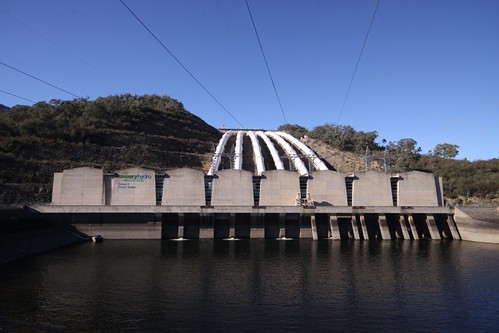Australia’s Snowy Mountains Scheme is an example of a civil engineering project on a massive scale – construction spanned 25 years from 1949 to 1974. As well as being big, there are also some smaller elements hiding in the shadows.
The biggest power station on the scheme is Tumut 3: with a total generating capacity of 1500 MW, water to the turbines is supplied by six pressure pipelines, each being 487 metres long, 5.56 metres in diameter, and made of 19 mm to 38 mm thick medium tensile steel. While from the outside the building only looks two stories high, when including the underground turbines it measures 50 metres high from basement to roof.
As well as the engineering outcomes, construction of the Scheme is also seen by many as a defining point in Australia’s history – a coming of age as an independent and resourceful country.
In the early days of the Scheme this was not true: early construction contracts were awarded to foreign companies, and it took until 1958 for the first Australian company to join the party, when Queensland firm Thiess Bros won the Tooma Dam and tunnel contract. Despite the late start, Thiess went on to become the biggest contractor on the Scheme by contract value, and 50 years later is now active on projects around Australia.
Work on the Scheme finally came to an end in 1974, when Thiess completed the previously pictured Tumut 3 dam and power station. In the years since, environmental concerns have hampered the construction of many dams across Australia, with new hydroelectric projects being few and far between.
However, some projects are still possible, such as this power station added to the Snowy Mountains Scheme in 2010.
With a generating capacity of just 14 MW, the Jounama Small Hydro has 1/100th the generating capacity of the Tumut 3 station, which happens to be located a short distance upstream. Permission to build Jounama was granted because it did not require a new dam: it utilises the otherwise wasted energy of water that passes through the spillway at already existing Jounama Pondage.
The cost for this tiny plant? $30 million – small scale projects are never cheap.



Leave a Reply